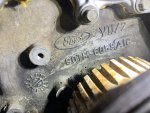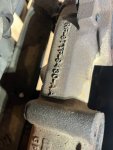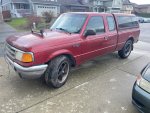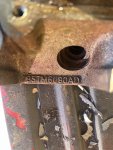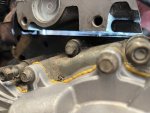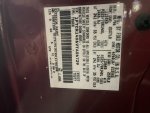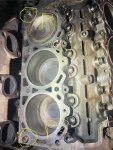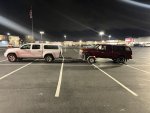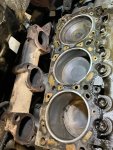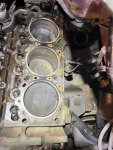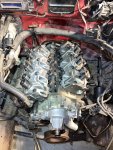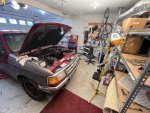- Joined
- Jan 15, 2025
- Messages
- 10
- Age
- 27
- City
- Bellingham WA
- Vehicle Year
- 1997
- Engine
- 4.0 V6
- Transmission
- Automatic
Hello Friends,
My buddy gave me his 97 ranger that was destined for the junkyard, until he offered me to take it from him. It comes with a canopy and I plan on getting it running for truck camping this summer. I look forward in getting involved with the forum and sharing on what im doing with the truck.
It has the 4L v6, but it has blown heads. I have been tearing into it for the past month and I am down to the block. But I may have made a grave mistake of assuming what engine is in the truck and ordered new cylinder heads from King Cylinder in a rash manner. I have deduced that my engine would be a 95TM,(according to King Cylinder site 95TM,98TM are years 1995-2000, and 90TM,93TM are years 1990-1994) So I ran with the 95TM. Now is the time to put on the new heads, but the heads are not wanting to sit flush by themself (see image three) Perhaps this is normal, and the tolerances for the two posts are very tight (see image seven with P1 and P2 highlighted to see what I'm refering too) and I need to just tighten them down, everything does seems to line up perfectly. If this is the case please advice.
Question Given the photos provided, can you please help me identify my engine, there seems to me some contradictory information. Such as the passager cylinder head reads 95TM6090AD(see image six), but on the front of the engine it reads 90TM-6059-A1C(see image five) I have also included an image of the passanger exhaust manifold(see image four) door sticker(see image two) if that helps. Thanks in advance.
My buddy gave me his 97 ranger that was destined for the junkyard, until he offered me to take it from him. It comes with a canopy and I plan on getting it running for truck camping this summer. I look forward in getting involved with the forum and sharing on what im doing with the truck.
It has the 4L v6, but it has blown heads. I have been tearing into it for the past month and I am down to the block. But I may have made a grave mistake of assuming what engine is in the truck and ordered new cylinder heads from King Cylinder in a rash manner. I have deduced that my engine would be a 95TM,(according to King Cylinder site 95TM,98TM are years 1995-2000, and 90TM,93TM are years 1990-1994) So I ran with the 95TM. Now is the time to put on the new heads, but the heads are not wanting to sit flush by themself (see image three) Perhaps this is normal, and the tolerances for the two posts are very tight (see image seven with P1 and P2 highlighted to see what I'm refering too) and I need to just tighten them down, everything does seems to line up perfectly. If this is the case please advice.
Question Given the photos provided, can you please help me identify my engine, there seems to me some contradictory information. Such as the passager cylinder head reads 95TM6090AD(see image six), but on the front of the engine it reads 90TM-6059-A1C(see image five) I have also included an image of the passanger exhaust manifold(see image four) door sticker(see image two) if that helps. Thanks in advance.

